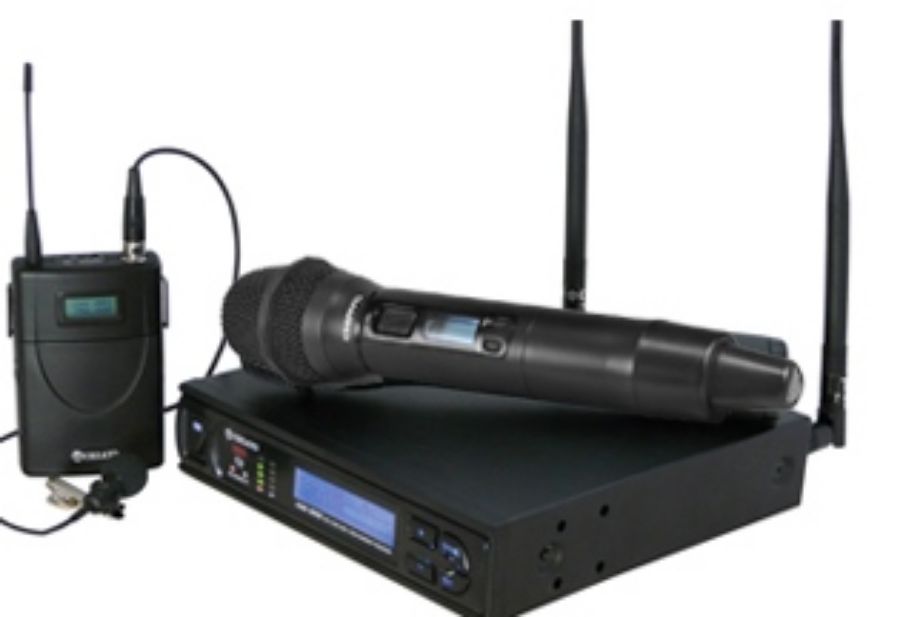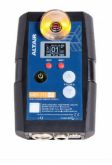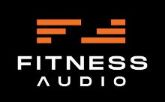
As of 11th March 2015 using the 698-806 MHz frequency range was no longer permitted and compliance action can now be taken against you if you use that range.
Why?
The 700 MHz band was allocated for next generation mobile broadband and fourth generation (4G) cellular. Radio microphones are not compatible with the new 4G cellular services and may cause interference.
Wireless Microphone Systems are miniature radio transmitters and their broadcast radio waves can interfere with anything else using the same frequency.
How do I find more information on the changes to use of radio microphones?
Visit the Ministry of Business, Innovation and Employment’s website.
How do I check what frequency I am operating on?
The frequency is usually marked on the back or bottom of the receiver (the box with the aerials that connects to your audio system). It will have a number on it, something official looking such as Freq. 750.000Mhz. It will also be under the battery cover of the actual microphone. If the main frequency number shown is between 698.000 ~ 806.000Mhz it is in the 700 MHz band.
What do I do if I am operating on an illegal band?
Contact a competent sound company and ask them to carry out a simple audit of your sound system and equipment. They shouldn't charge you for this. Ask them to check everything. They should list your wireless microphones and whether they comply or not. They should check the cables, amplifiers, speakers and audio mixing equipment. They can sort out minor equipment and cabling issues during the visit and will be able to offer a solution if your wireless microphones are operating illegally.
The upside
If you do have to upgrade, equate the need to move on with the shift from analogue to digital TV. Just like the shiny new TV that you bought with lots of channels and new features, your new sound system will offer similar benefits:
• Better sound quality
• Longer range operation
• Ease of use (IrDA - a complete set of protocols for wireless infrared communications that are now ubiquitous)
• Greater channel density (more microphones can operate together without interference)
So use this as an opportunity to clean up your school sound equipment and refresh your wireless microphones!
What pitfalls should I be aware of?
- Buy from a reputable company and check out the support available. You get what you pay for like most things. Stay away from the Trade Me hawkers and low end surplus clearance dealers. You will want backup, spare parts and professional advice at some point in the future. For example ask about the manufacturer's ability to "retune" them if the license is changed again.
- Don’t let yourself be oversold. A quick glance around the industry shows a range of prices from $450 - $1000 for microphone systems suitable for a school. You can pay more for professional microphone systems but you don't need that. However try to choose a system that has switchable frequencies, diversity aerial systems, automatic frequency allocation (IrDA), operates in the UHF band and uses good quality condenser microphones. You can comfortably get all that for about $500 per set with a trade-in rebate. Most of the suppliers of wireless microphone systems in NZ are offering trade-in rebates on old equipment so make sure to twist their arm on the price, especially if you are replacing more than one system.
- Don’t throw anything away without speaking to someone first! Check and see if your equipment can be re-tuned. For example if your equipment is the "Chiayo" brand it is cost effective to have it re-tuned onto the new frequency range. It takes 4-6 weeks and will be sent back to the manufacturing plant in Taiwan. The small cost is worth it as they will check and correct the operation while it is back at the factory…so don't throw anything away until you have talked to a reputable dealer...like Edwards.
Contact us for a FREE wireless & sound audit: we offer a Free 10 Point Audit on your wireless and sound equipment.
This includes:
- Equipment inspection
- Action report be it an upgrade, trade-in or re-tune
- Quotation for the above options
- Environmentally responsible disposal of any redundant equipment
Our commitment
We are experienced at working with schools, churches and venues. We guarantee minimal disruption and speedy, efficient service to ensure that you are operating within the law.
If you purchased the original equipment from Edwards we will most likely be able to have it re-tuned at little cost to you. Alternatively our trade-in deals offer generous rebates and we will ensure that any replacement equipment can be used on the widest possible frequency range in order to work around television and other users. This flexibility is important as the introduction of digital television, combined with the possibility of a gradual increase in television channels, will affect the frequencies available in the future.






















































